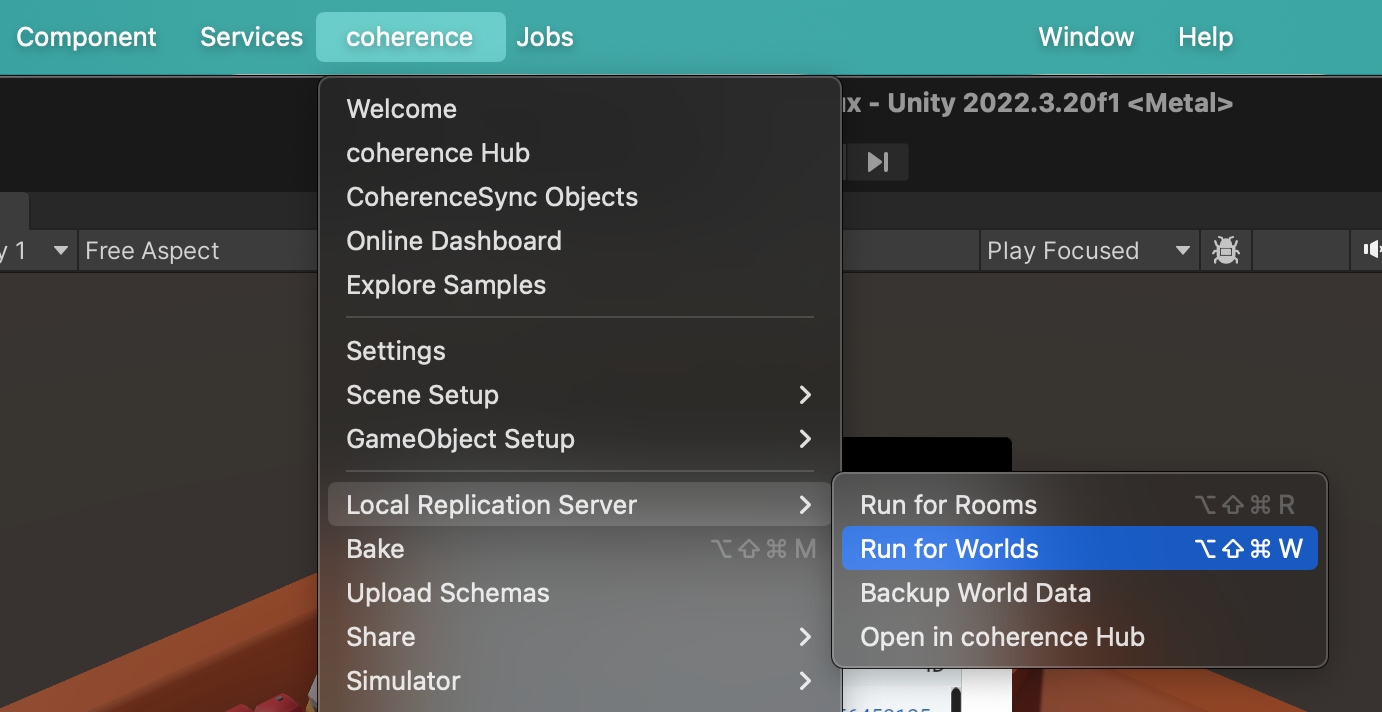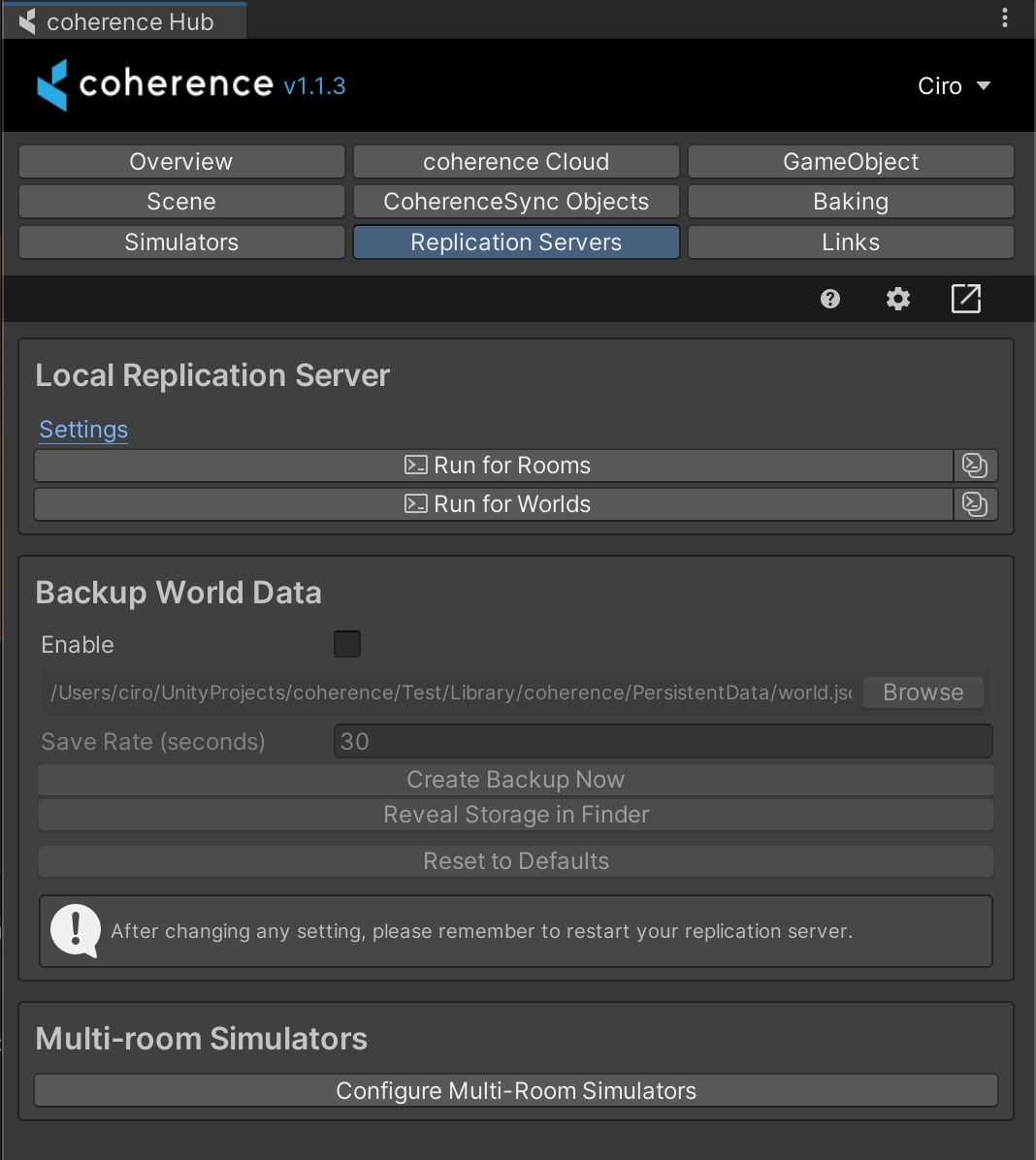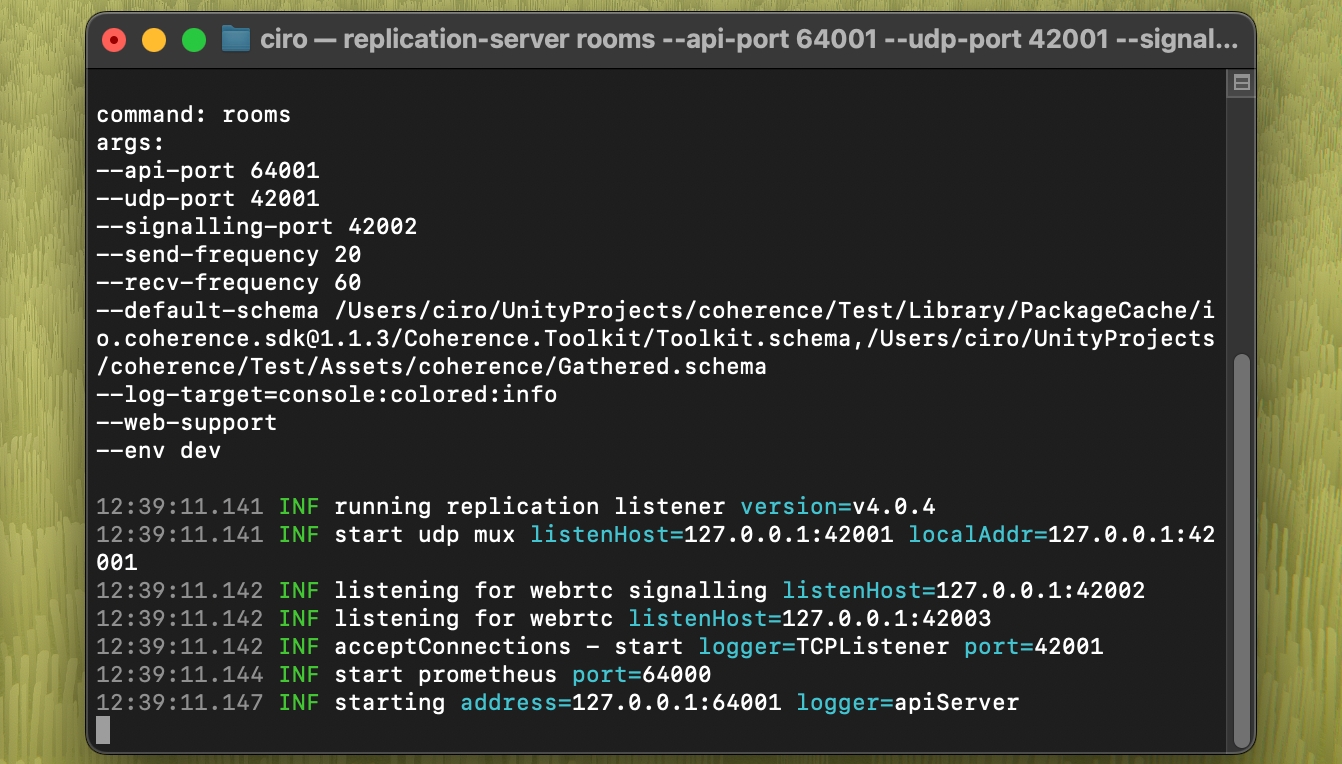Local development
Now we can build the project and try out network replication locally. This example will show you how to launch a local Replication Server and connect multiple instances of the game to it.
Running a Replication Server locally
You can run a local Replication Server from:
coherence > Local Replication Server > Run for Rooms / Run for Worlds

As with most features found in the menu, you can find local Replication Server functionality in the coherence Hub as well.
Open the Replication Servers tab and run a Room or a World Replication Server:

Regardless of how you launch it, a new terminal window will open and display the running Replication Server:

Done! If the terminal opens correctly and you don't see an error line, it means your Replication Server is running! Now you should be able to connect in the game.
If you can't connect
Did you change something in the configuration of your connected Prefabs? You have to bake again, and restart the Replication Server.
You will notice it because there will be a little chef's hat next to the coherence folder, or a warning sign on Bake buttons.

 Time to bake!
Time to bake!
Testing the Game
Was this helpful?

